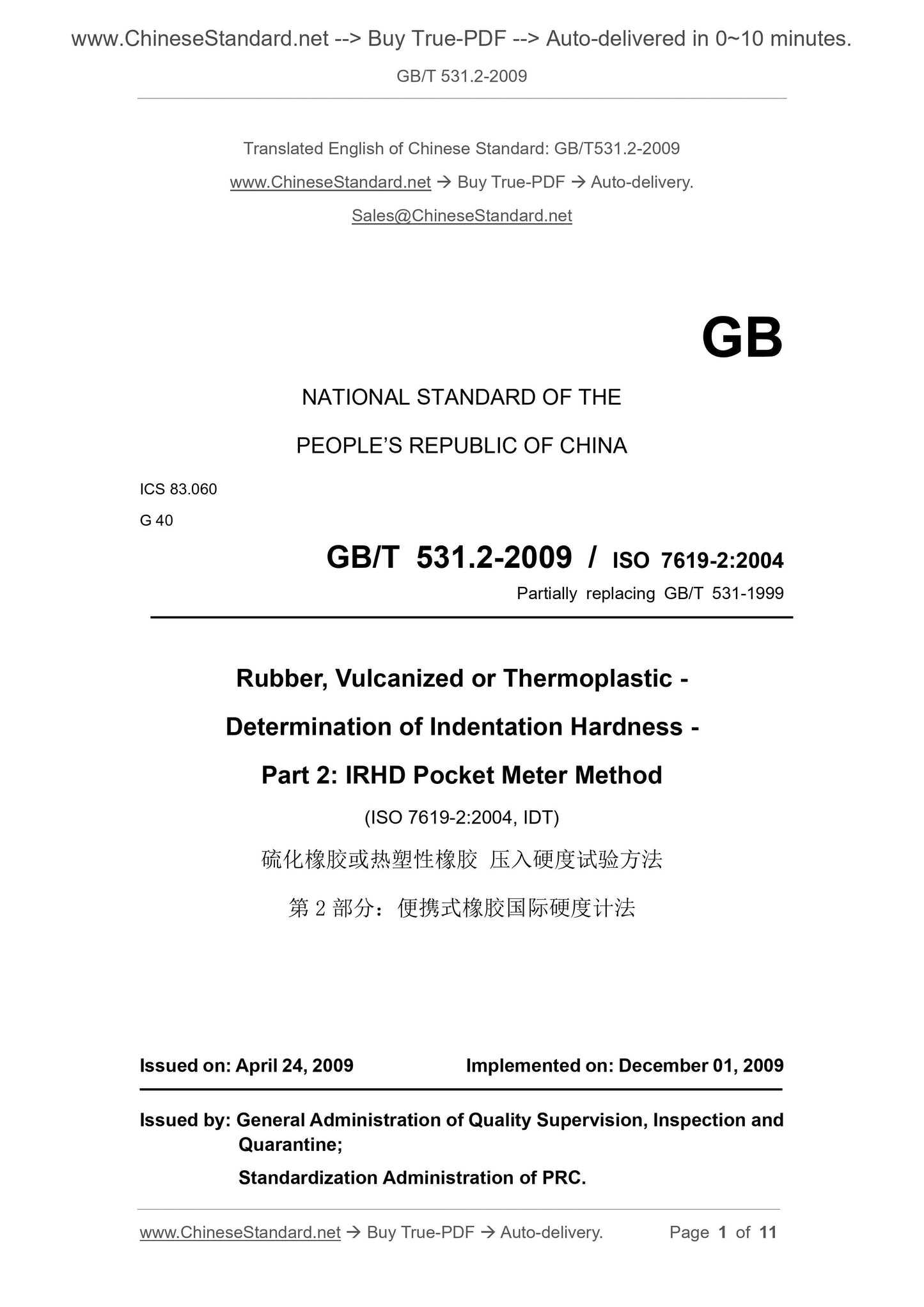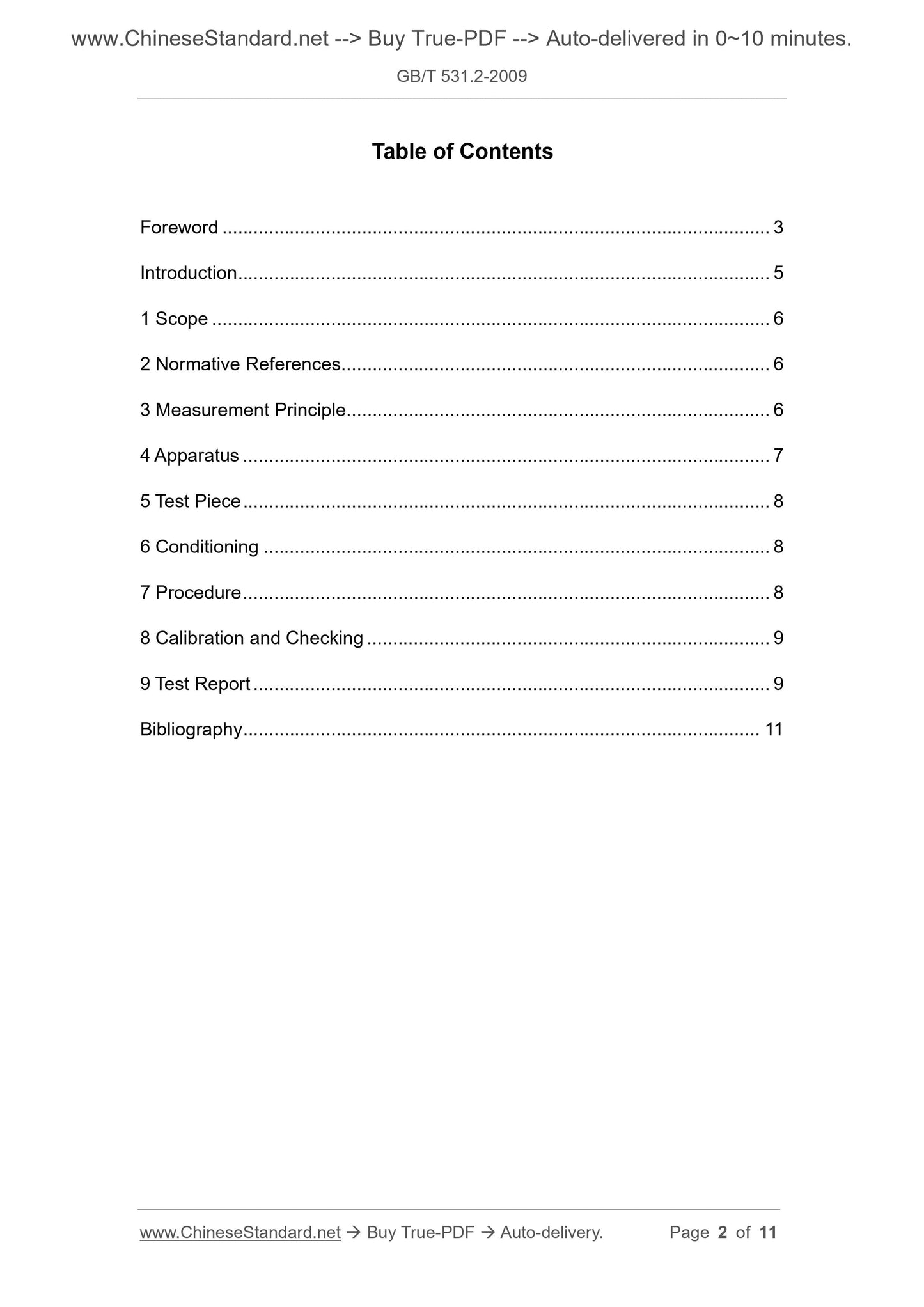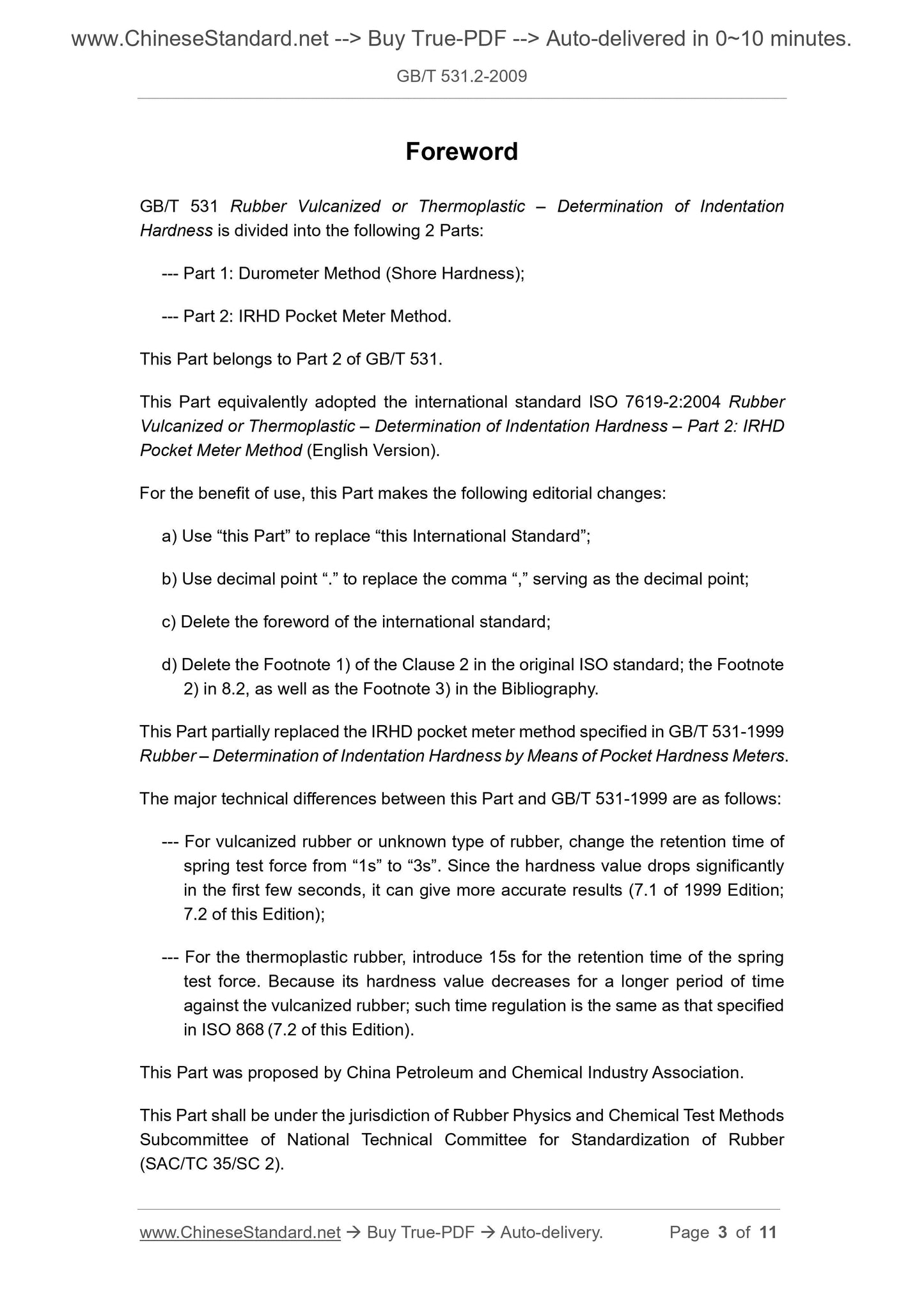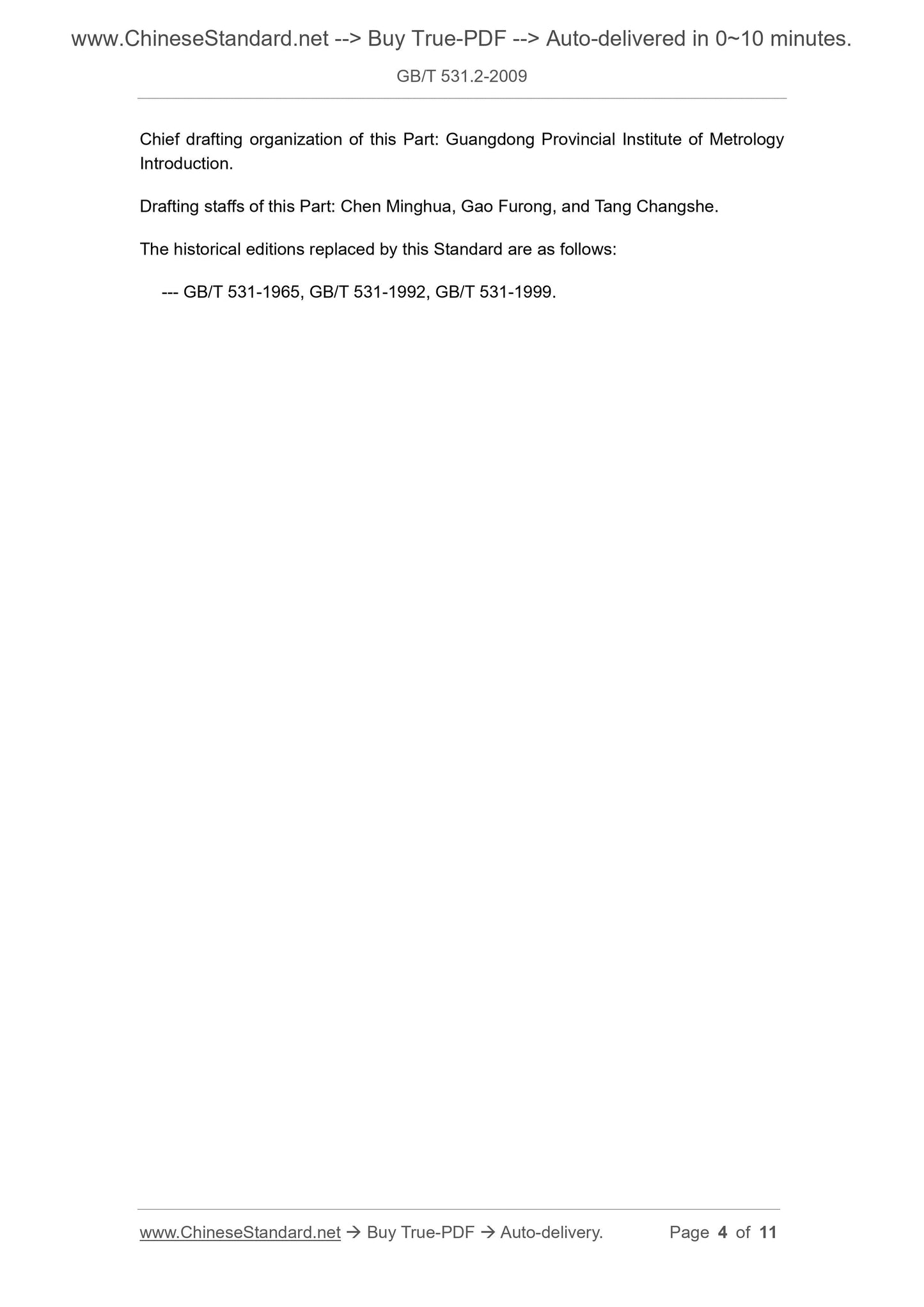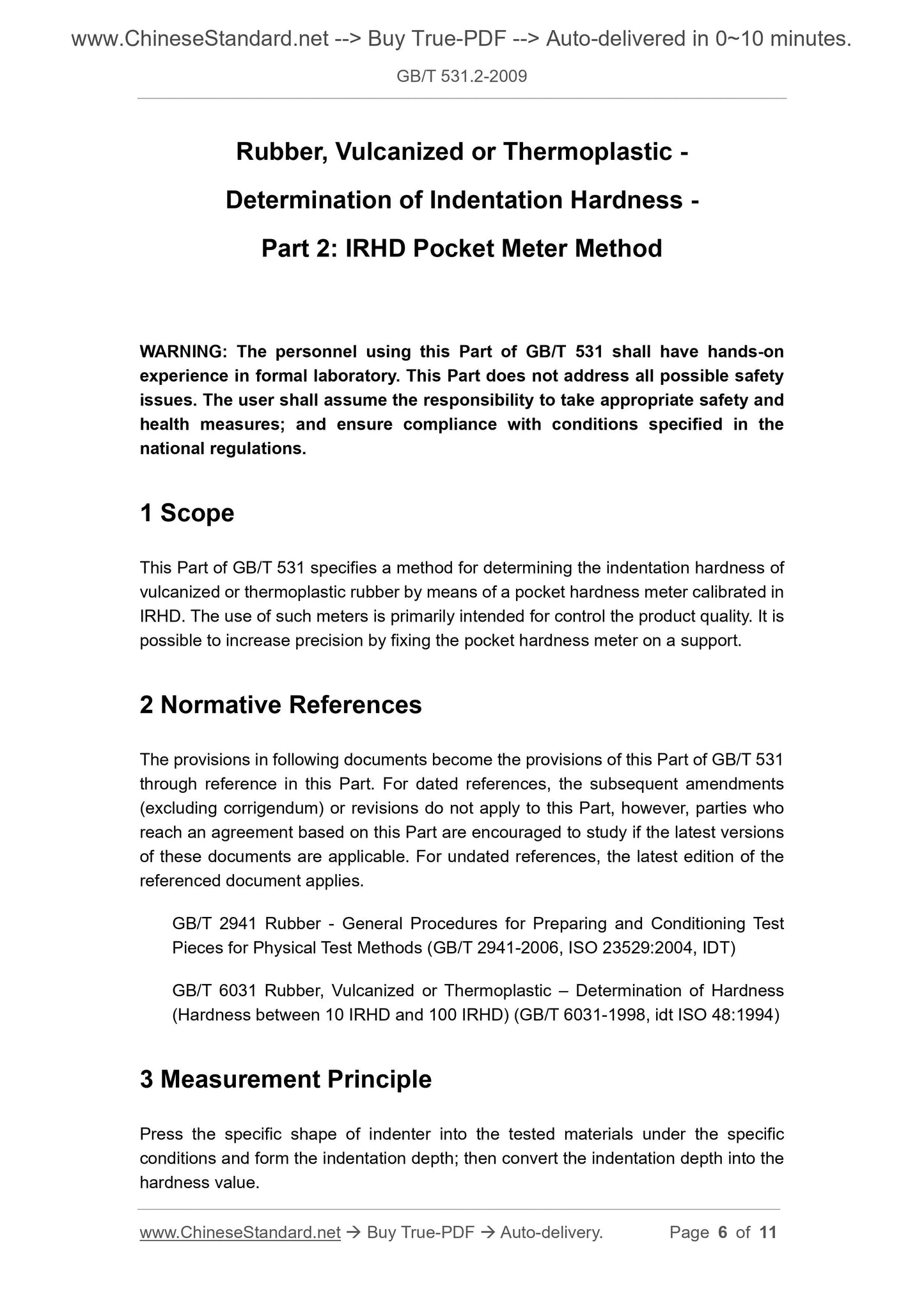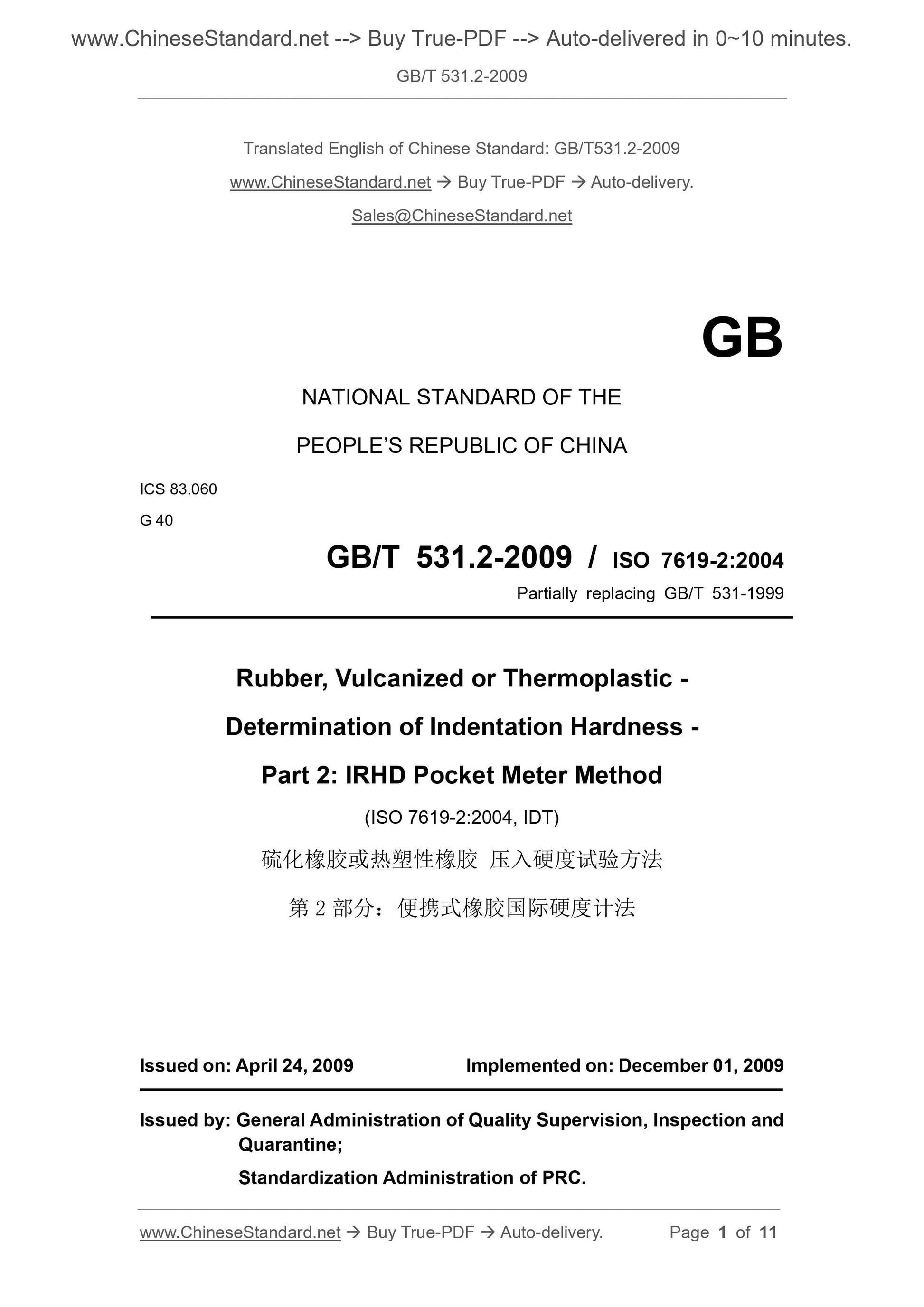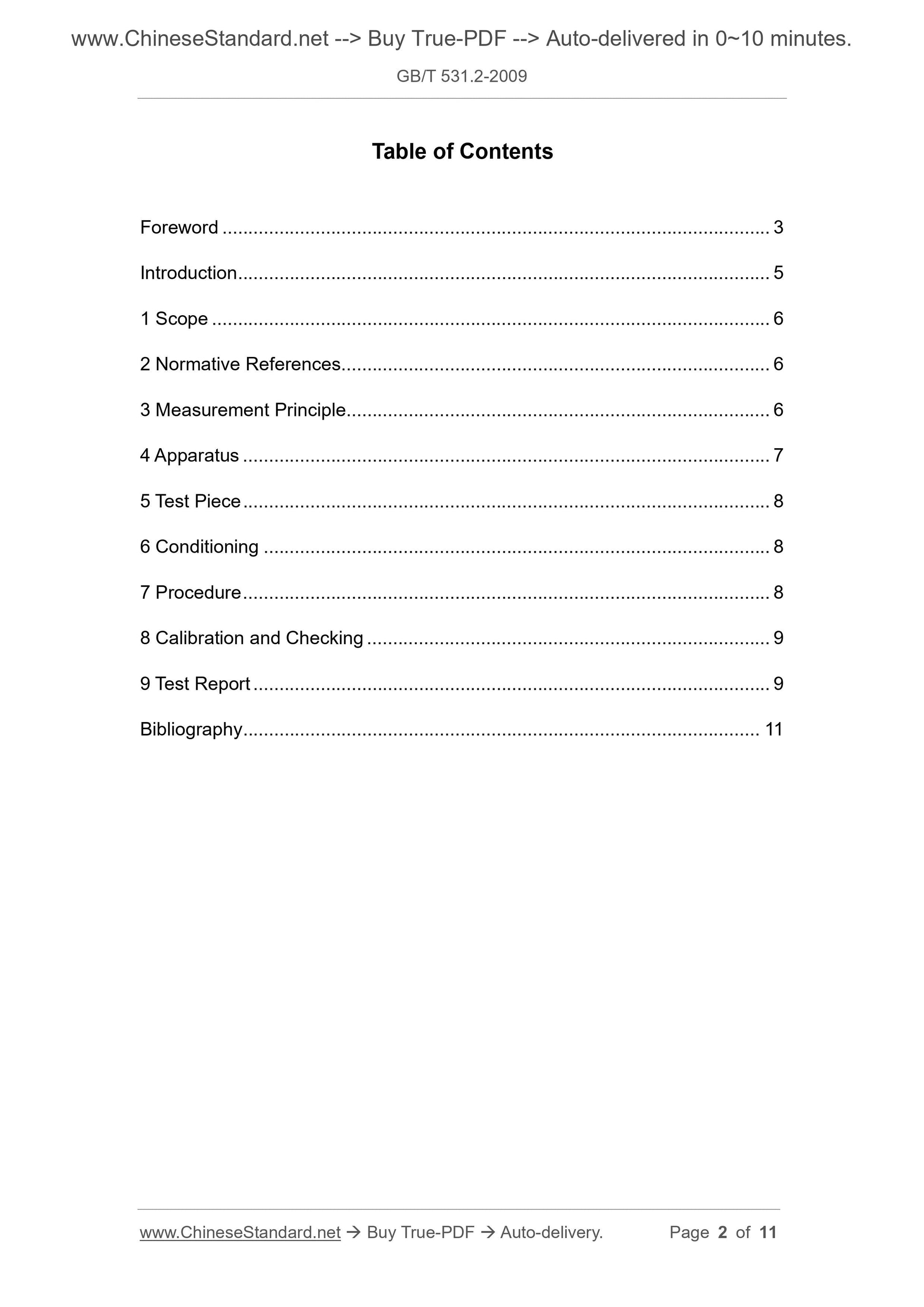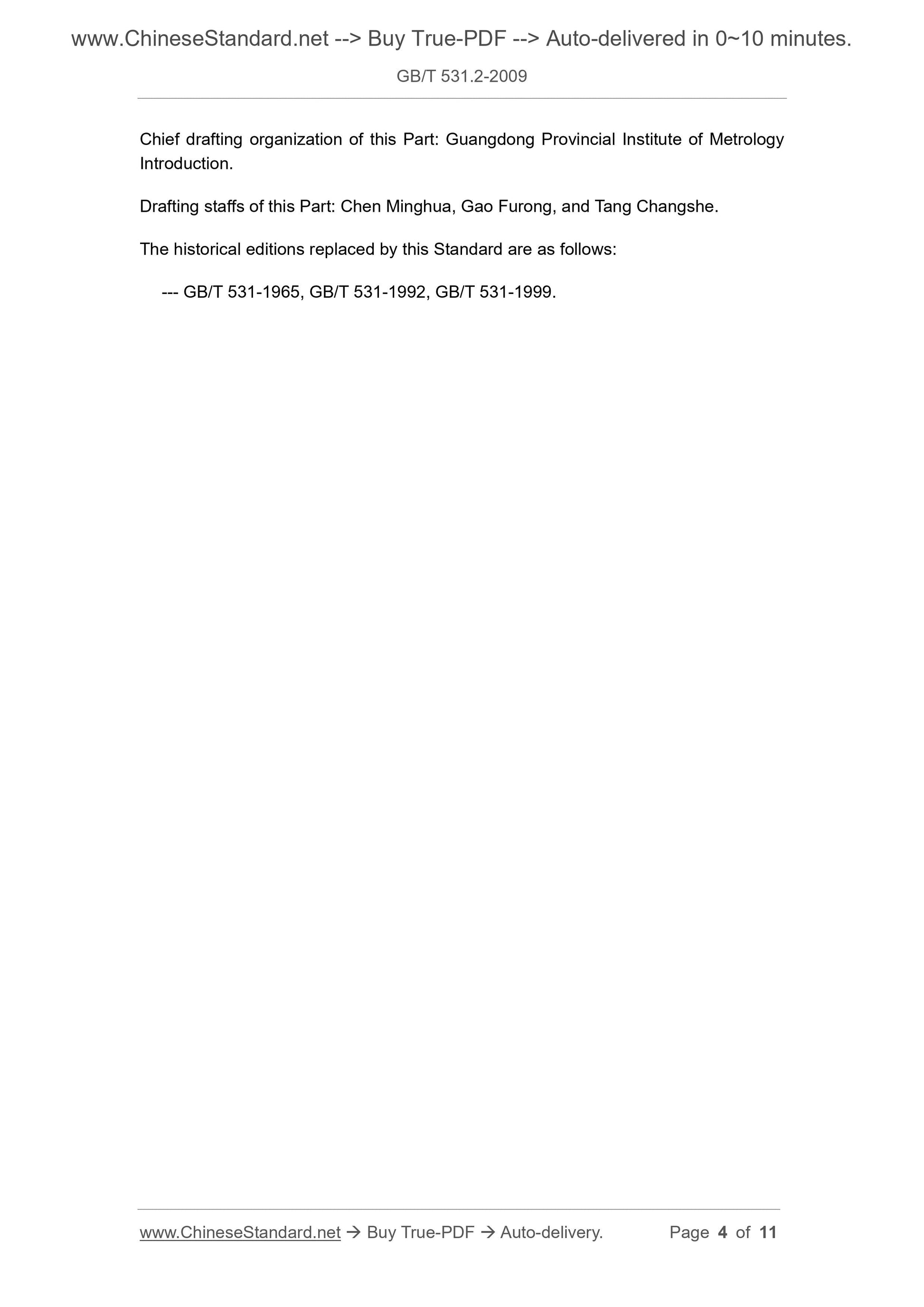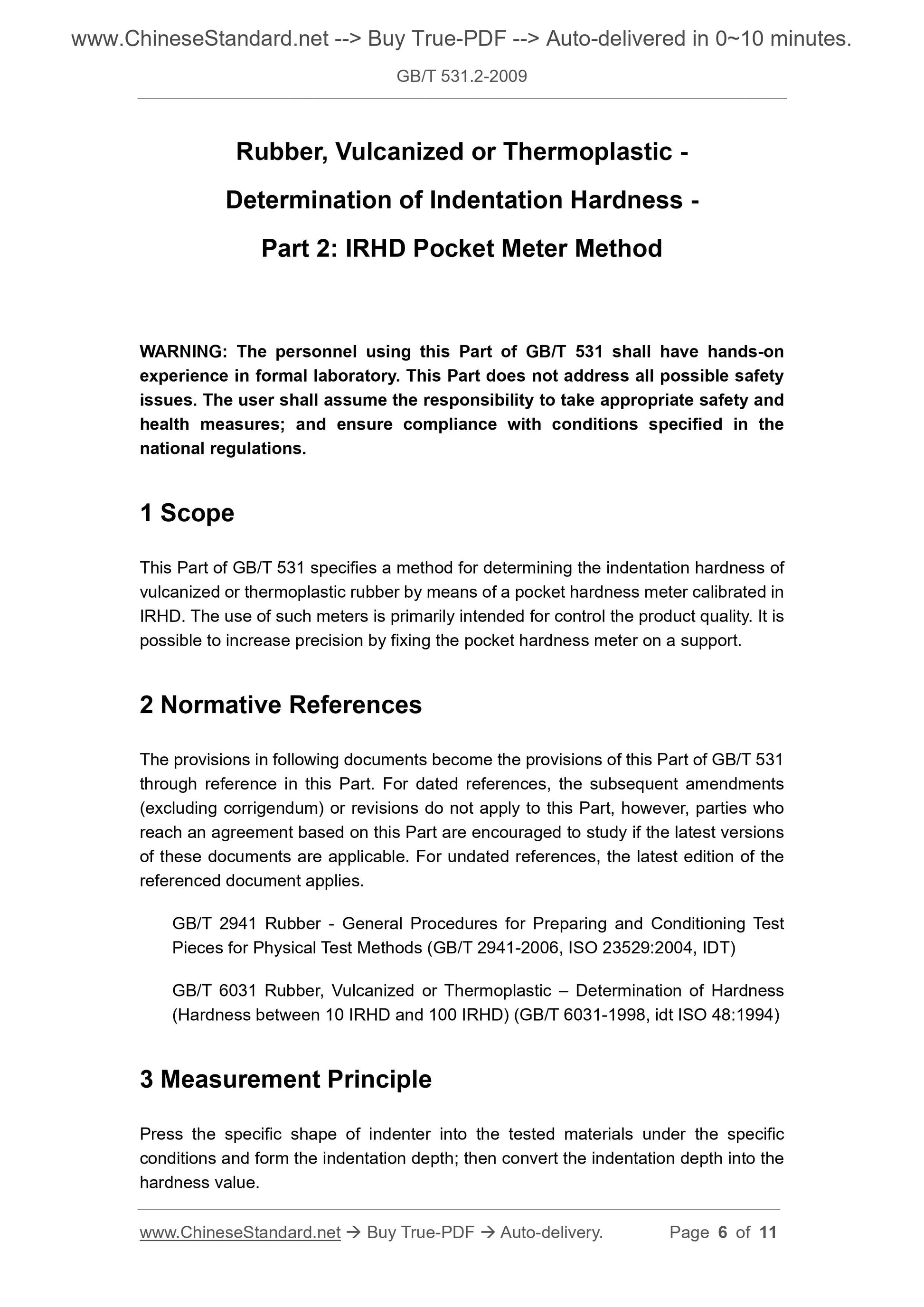1
/
of
5
www.ChineseStandard.us -- Field Test Asia Pte. Ltd.
GB/T 531.2-2009 English PDF (GB/T531.2-2009)
GB/T 531.2-2009 English PDF (GB/T531.2-2009)
Regular price
$70.00
Regular price
Sale price
$70.00
Unit price
/
per
Shipping calculated at checkout.
Couldn't load pickup availability
GB/T 531.2-2009: Rubber, vulcanized or thermoplastic -- Determination of indentation hardness -- Part 2: IRHD pocket meter method
Delivery: 9 seconds. Download (and Email) true-PDF + Invoice.Get Quotation: Click GB/T 531.2-2009 (Self-service in 1-minute)
Newer / historical versions: GB/T 531.2-2009
Preview True-PDF
Scope
This part of GB/T 531 specifies a method for measuring the hardness of vulcanized or thermoplastic rubber by using a portable rubber international hardness tester.The use of such durometers is mainly to control the quality of the product, and the fixing of the portable hardness tester to the bracket can improve the measurement accuracy.
Basic Data
| Standard ID | GB/T 531.2-2009 (GB/T531.2-2009) |
| Description (Translated English) | Rubber, vulcanized or thermoplastic -- Determination of indentation hardness -- Part 2: IRHD pocket meter method |
| Sector / Industry | National Standard (Recommended) |
| Classification of Chinese Standard | G40 |
| Classification of International Standard | 83.060 |
| Word Count Estimation | 8,872 |
| Date of Issue | 2009-04-24 |
| Date of Implementation | 2009-12-01 |
| Older Standard (superseded by this standard) | GB/T 531-1999 |
| Quoted Standard | GB/T 2941; GB/T 6031 |
| Adopted Standard | ISO 7619-2-2004, IDT |
| Regulation (derived from) | National Standard Approval Announcement 2009 No.6 (Total No.146) |
| Issuing agency(ies) | General Administration of Quality Supervision, Inspection and Quarantine of the People's Republic of China, Standardization Administration of the People's Republic of China |
| Summary | This standard specifies the use of portable hardness measuring international vulcanized rubber or thermoplastic rubber indentation hardness methods. Such hardness is mainly used to control the quality of products, the portable hardness tester fixed to the bracket can improve its measurement accuracy. |
Share
